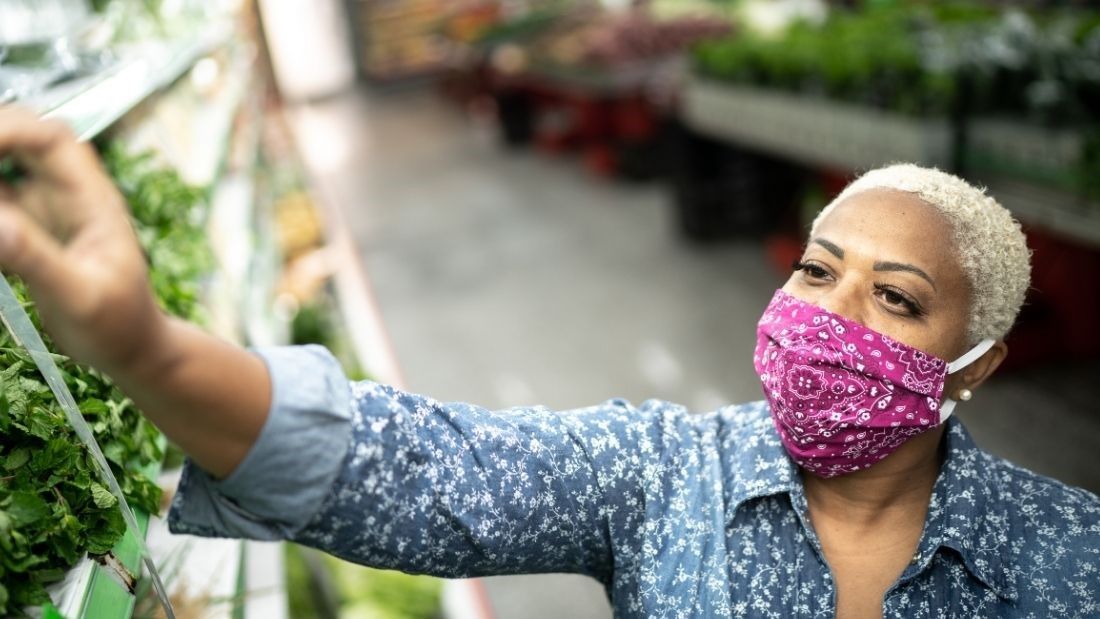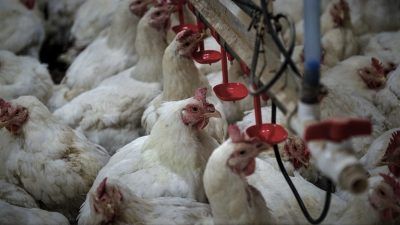Pandemic potential

Coming from a factory farm near you!
Almost a year on, with the number of global deaths now over two million, this has been the worse pandemic for 100 years. People carry on, buying meat, cheese and eggs, oblivious to the fact that they might be buying into the next pandemic. What is really scary is that this one might just be a dress rehearsal for something much worse to come.
Scientists have been warning us for years about the pandemic threat posed by the way we treat animals; intensive animal agriculture and wildlife markets. To most, the idea of a virus jumping from a bat to a pangolin then to us sounds incredible but scientists warned us that this could happen and now they are warning about the dangers from factory farms and other viruses.
Bat woman
Often called China’s ‘bat woman’ because of her virus-hunting expeditions into bat caves, virologist Zheng-Li Shi at the Wuhan Institute of Virology, has spent years isolating coronaviruses from bats that live in caves in China’s Yunnan province. In 2013, Shi’s research showed that bat viruses had passed to people living near the caves. Almost certainly the trading in bats at wet markets had brought them into close contact with many people.
Poised for human emergence
In 2016, research revealed that a bat coronavirus similar to the one that causes Covid-19, could replicate in human airway cells. Scientists described it as being ‘poised for human emergence’. A failure to act on these warnings meant that an opportunity to protect human health was missed.
There are other coronaviruses that can infect dogs, cats, cattle, pigs and poultry. Swine acute diarrhoea syndrome coronavirus (SADS-CoV) is another new one that is thought to have jumped from bats to pigs. In pigs, it causes severe diarrhoea from which 90 per cent of young piglets die. First identified in Guangdong in 2016, there have been several outbreaks in China in recent years, sparking fears that it could trigger another coronavirus pandemic.
Zoonoses, wet markets and factory farms
It’s not new; Ebola, HIV, SARS and MERS are all examples of zoonotic infectious diseases that have spread from animals to humans. What is new is the frequency at which new viruses are emerging. These ‘spill-over’ events are most likely to occur when humans invade wildlife habitats, at wet markets where wild and domesticated animals are slaughtered, or in factory farms where large numbers of animals are crammed into sheds under horrific conditions. As human hunger for meat and dairy increases so does the threat of an emerging zoonotic disease with pandemic potential.
Bird flu
Many thought the next pandemic would be caused by an avian influenza (bird flu) virus jumping to humans from poultry or pigs These viruses have been around for thousands of years, happily co-existing in wild water birds, passing from one bird to another in water. But when birds were taken to market, the viruses could no longer spread that way.
In the new, stressful environment, mutations occurred that enabled it to spread via the faeces, and nasal, mouth and eye secretions of infected birds, thus, giving rise to a series of pandemics.
The 1918 Spanish flu pandemic was one of the deadliest ever, killing an estimated 50 million people. Caused by an H1N1 avian influenza virus, it’s not known from which animal it came but it was of avian origin so probably sprang from poultry or wild birds. The next three pandemics were caused by ‘reassortant viruses’ with an avian-origin; pick-and-mix viruses combining elements from more than one virus.
The H2N2 virus that caused the 1957 Asian flu pandemic (estimated to have killed around 1.1 million), was probably the product of a wild duck virus combining, possibly in pigs, with one from humans. Pigs are referred to as ‘mixing vessels’ as they are susceptible to infection with viruses from pigs, humans and birds. H2N2 persists in wild and domestic birds and re-emergence in humans could pose a significant pandemic threat.
The H3N2 virus responsible for the 1968 Hong Kong flu pandemic, that killed up to four million people, is thought to have evolved from H2N2 by combining with another avian influenza virus to produce a new strain capable of infecting humans.
Another H1N1 virus was responsible for the 2009 swine flu pandemic that began in pigs in Mexico and spread rapidly across the world, killing up to half a million people. It contained elements of viruses from humans, birds, North American pigs and Eurasian pigs. The mixing, it is thought, occurred in live pigs being traded internationally. Swine flu is now one of the seasonal flu viruses that circulate each winter and if you’ve had flu in recent years, there’s a good chance it was this one.
A breeding ground for disease
Factory farms provide a perfect breeding ground for mutating viruses. Animals are confined in closed, filthy, stressful and crowded industrial facilities with little or no natural light – important as UV light harms viruses. Bred for growth, their natural immunity is low so if you wanted to create an ideal environment for a new virus to emerge, you couldn’t do much better than a factory farm.
Every year in the UK, there are bird flu outbreaks in poultry farms. Over the 2020-2021 winter, the highly pathogenic H5N8 was found in a numerous farms around the UK – called ‘highly pathogenic’ because it kills a high percentage of the birds it infects. So far, H5N8 has not infected humans but that could change. Other strains, that have infected humans and are a cause for concern, include H7N9 and H5N6. There will be more to come.
H5N1 concern
The highly pathogenic H5N1, reported in 1996 in China, is prevalent in poultry across Asia and Africa, causing more than 15,000 outbreaks in birds raised for eggs and meat. More than 240 million poultry – chickens, ducks, turkeys and geese – have either died from infection with H5N1 or been slaughtered in an effort to stop it spreading. Between 2003 and July 2020, 861 human cases and 455 deaths due to H5N1 have been reported. Most infections resulted from direct contact with poultry, but a small number of person-to-person cases have occurred among those caring for sick relatives. The World Health Organisation (WHO) says the case fatality (death) rate is around 60 per cent.
If it becomes more easily spread between people, like Covid-19, a pandemic caused by H5N1 would be catastrophic. The range of deaths could be anything between five and 150 million, according to David Nabarro, WHO senior public health expert.
The fact that we know our food system has the potential to cause another, possibly far deadlier, pandemic provides us with an opportunity. We can do nothing, as the government is doing, or we can say enough is enough and make our next food shop a vegan one!





